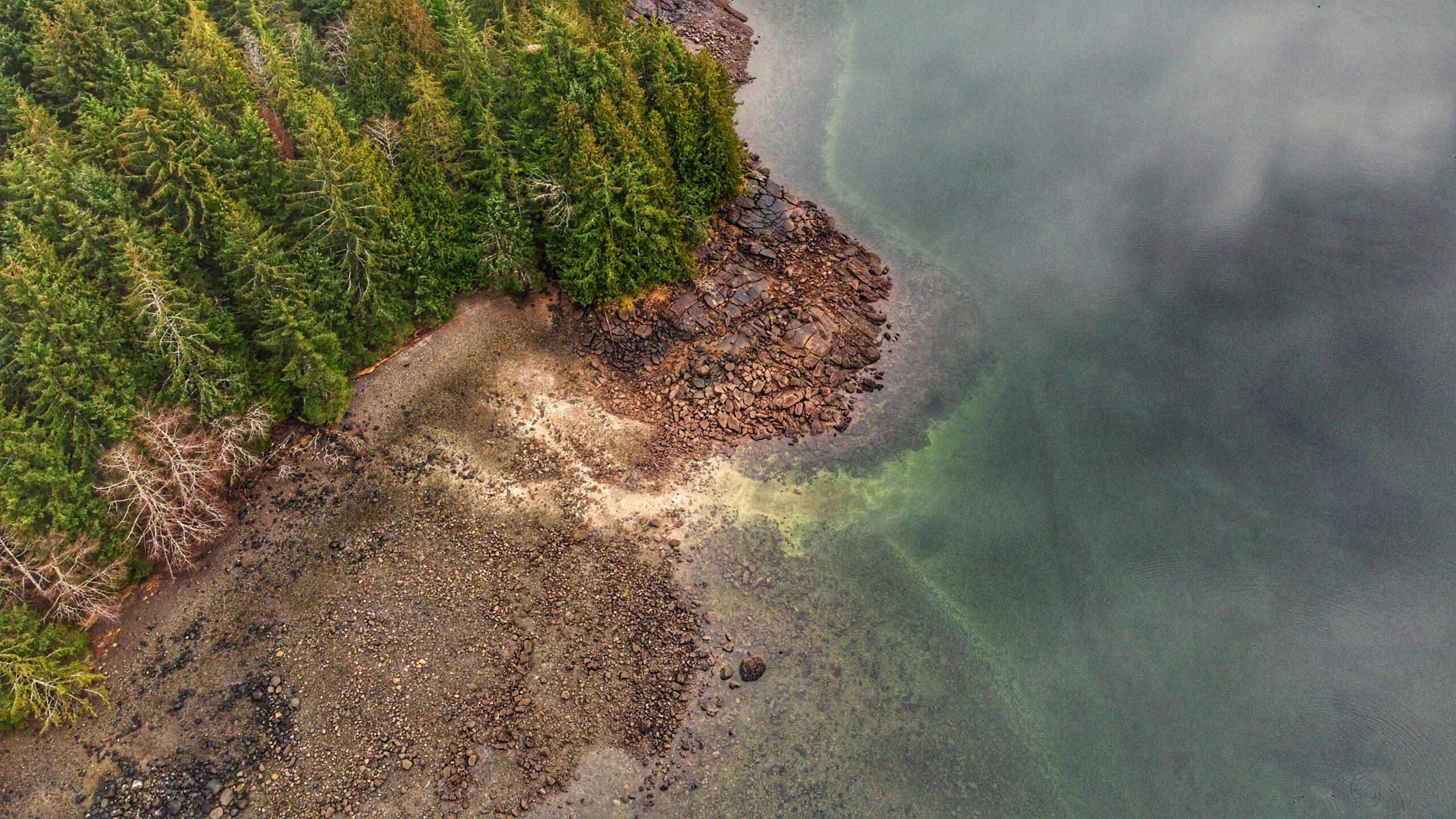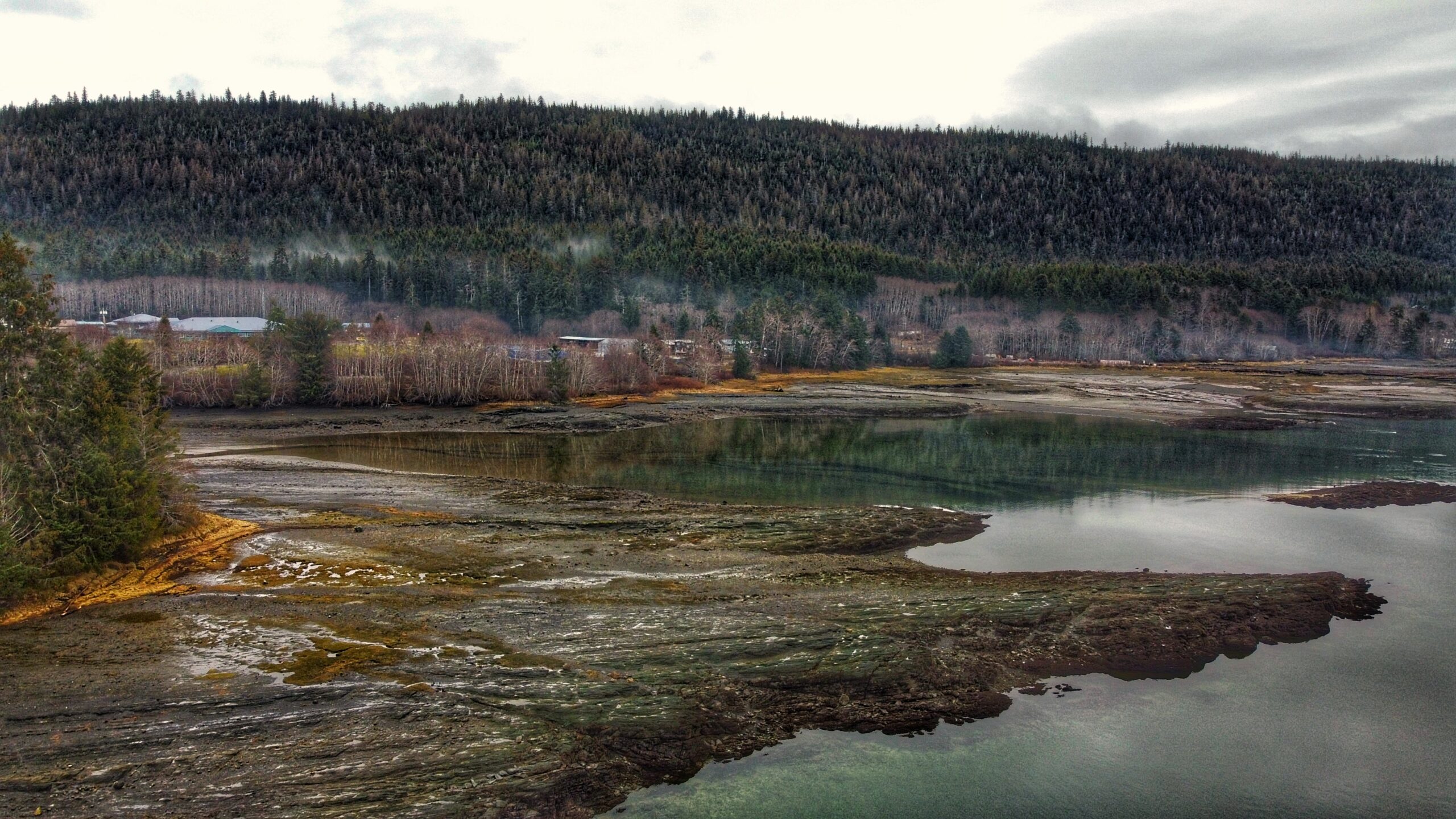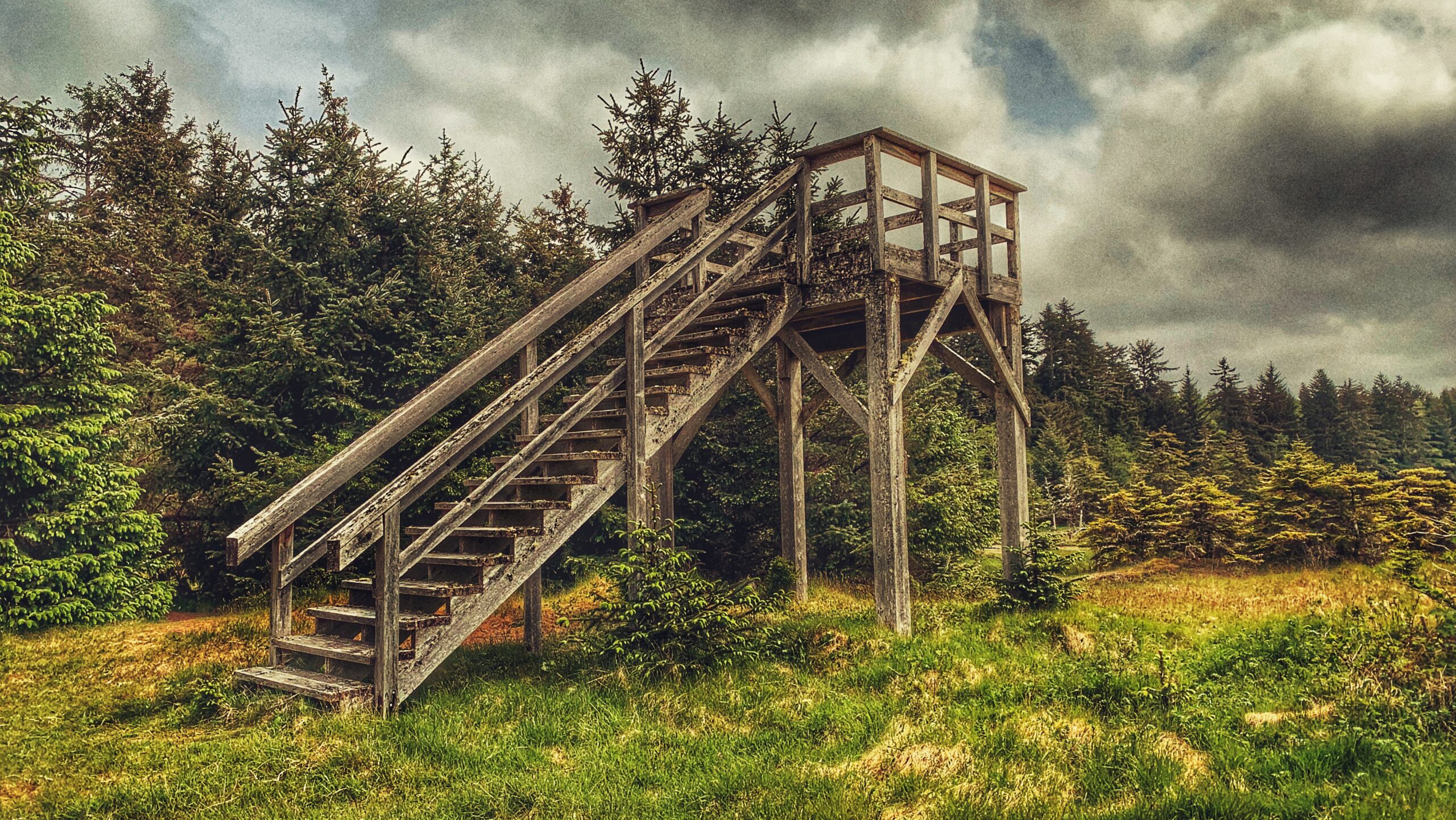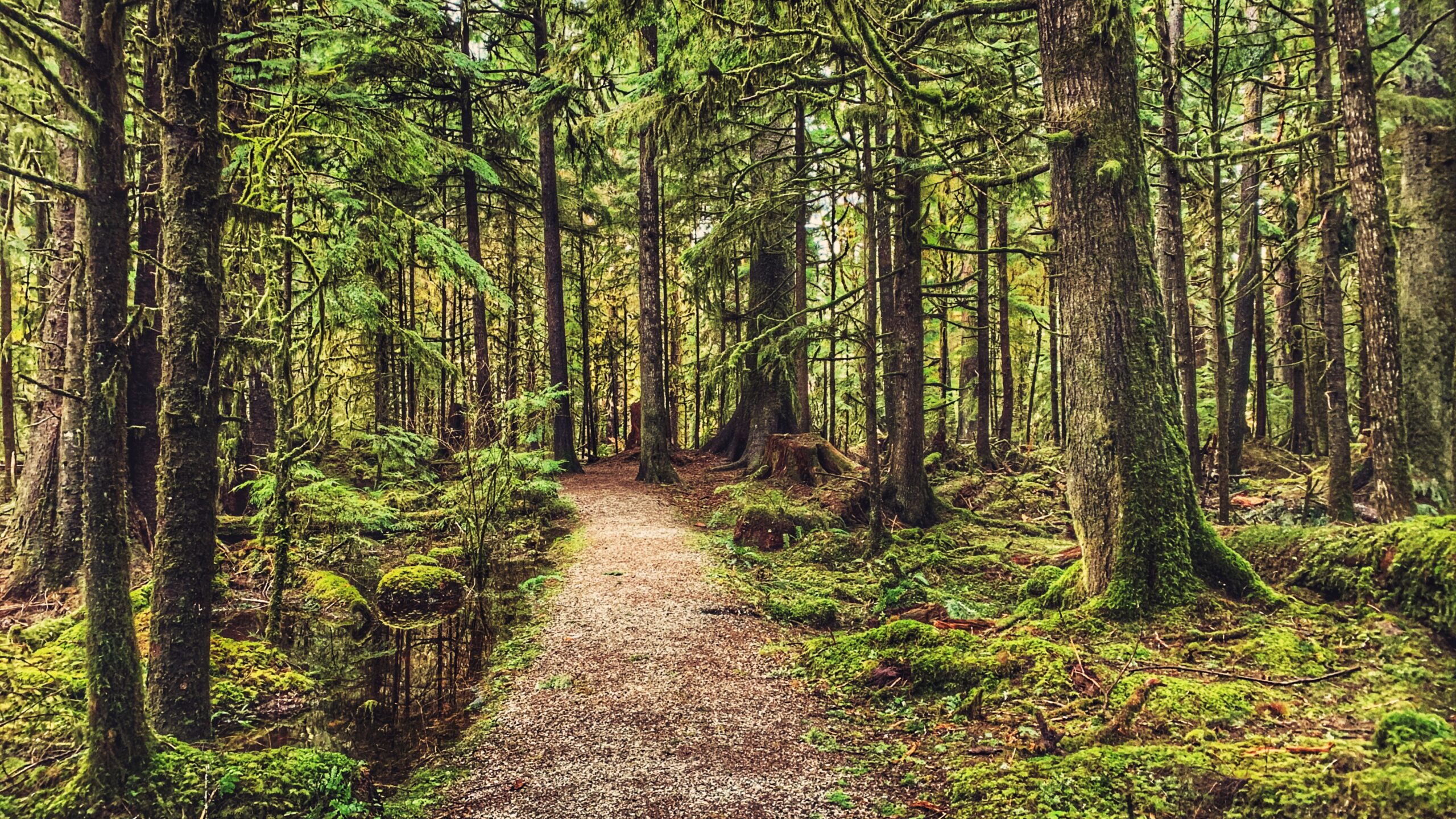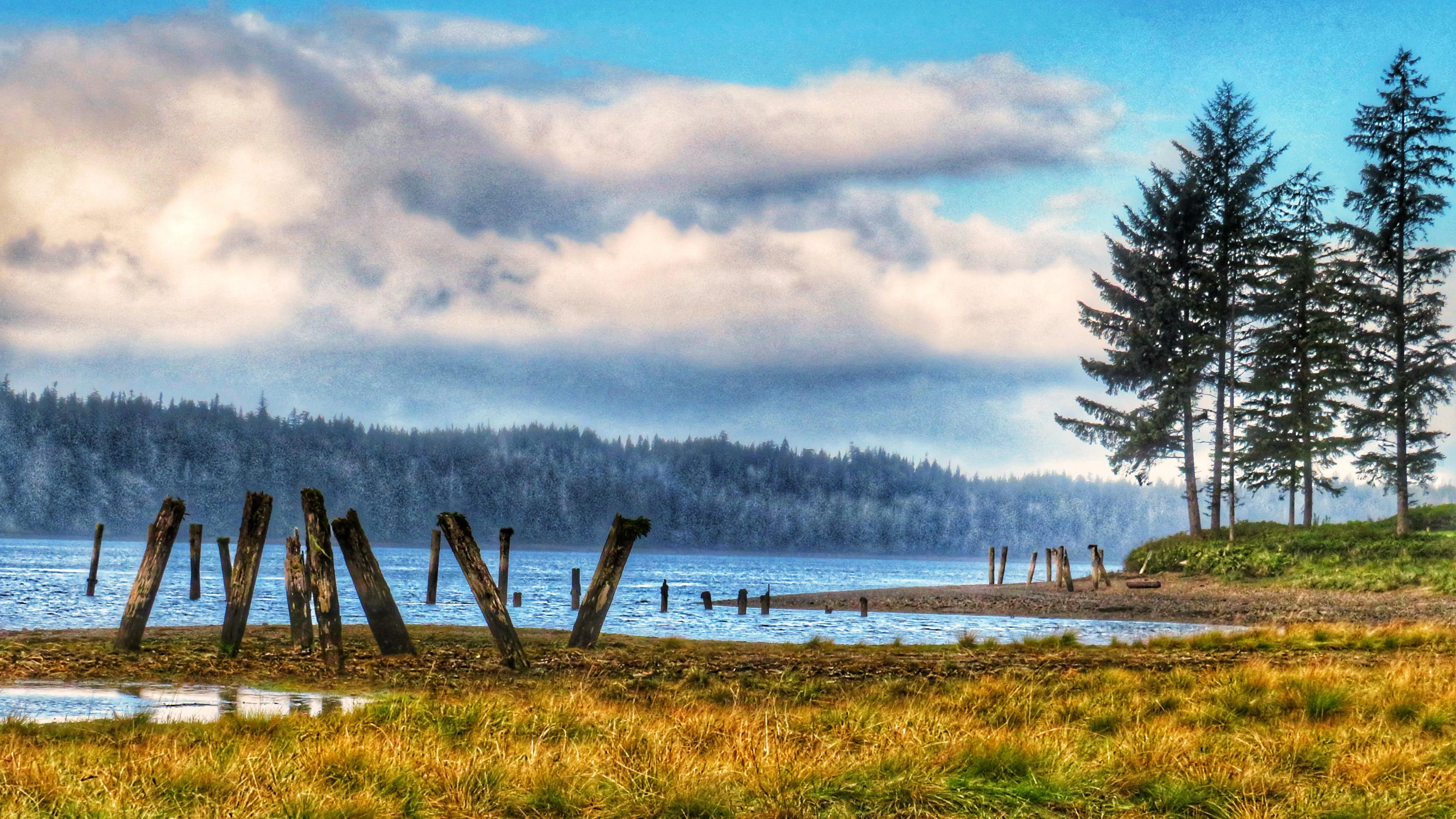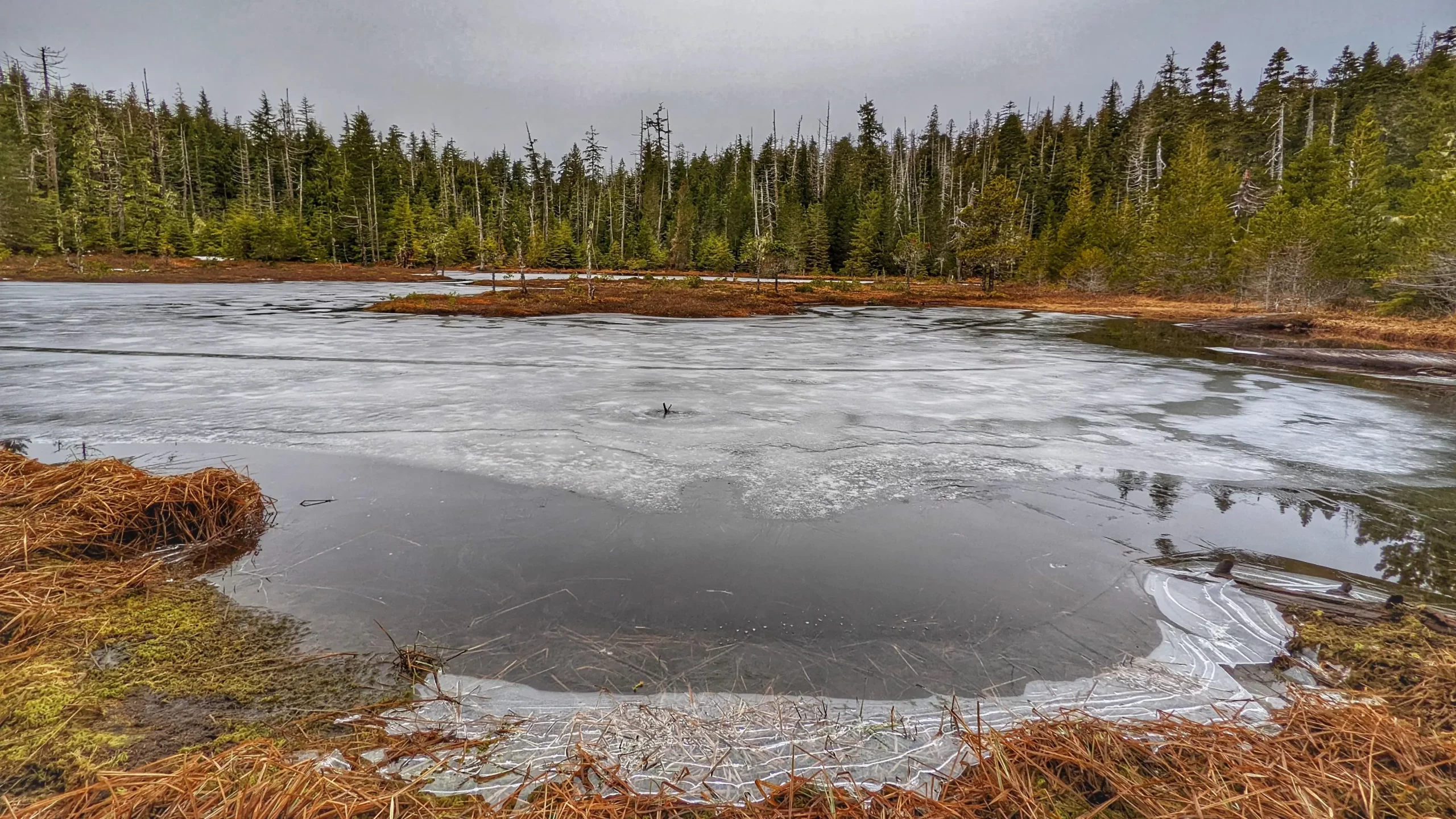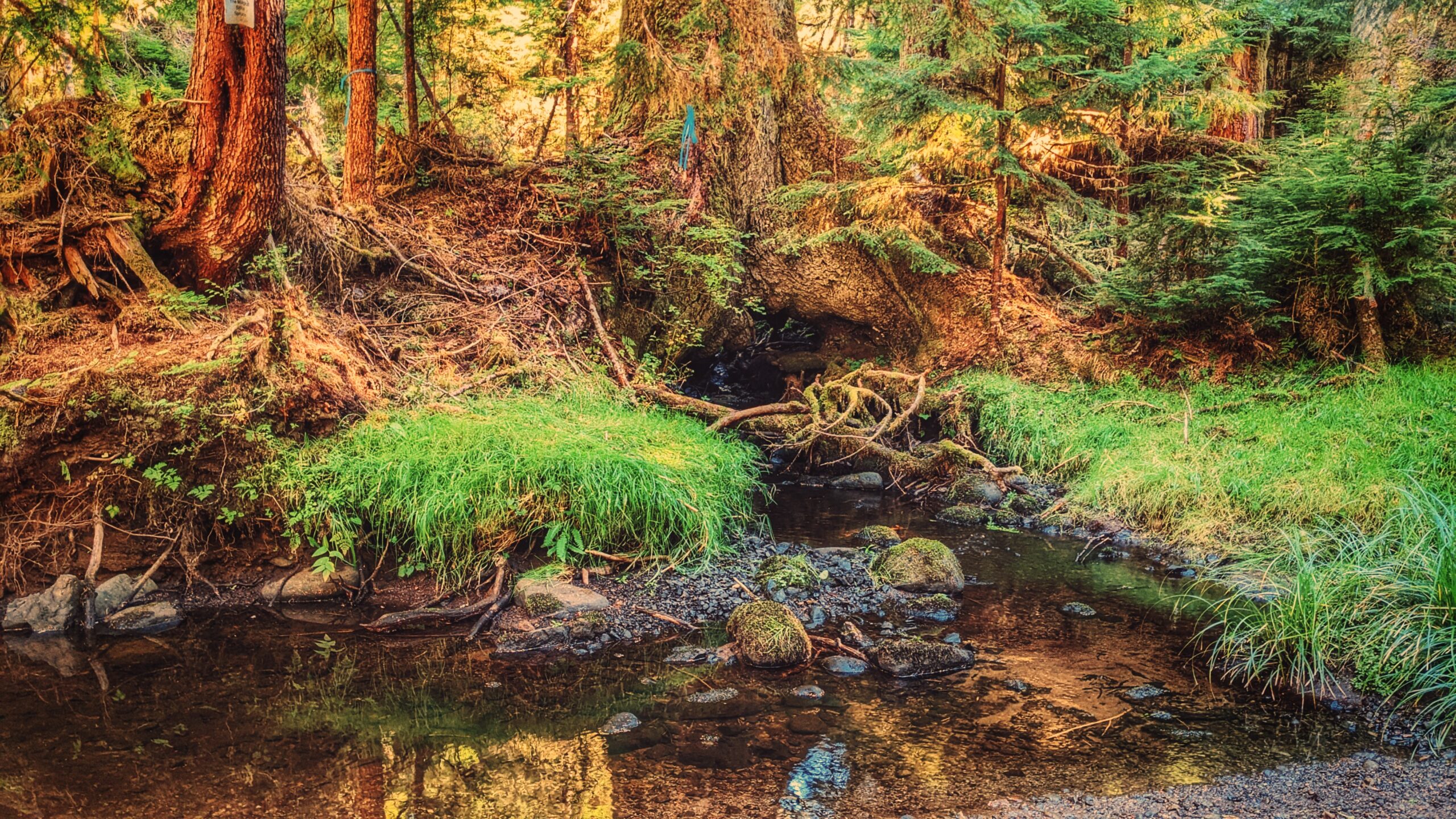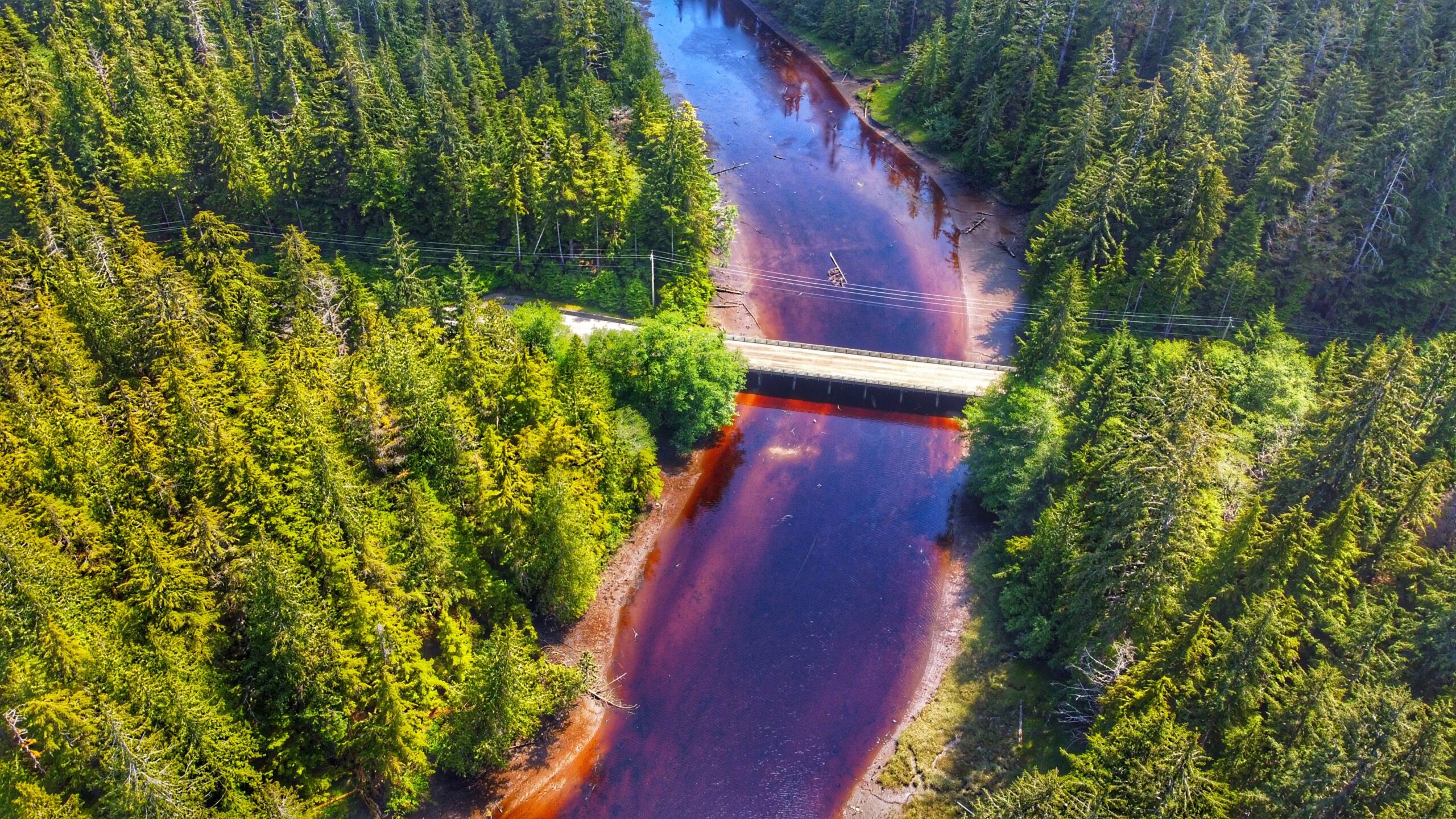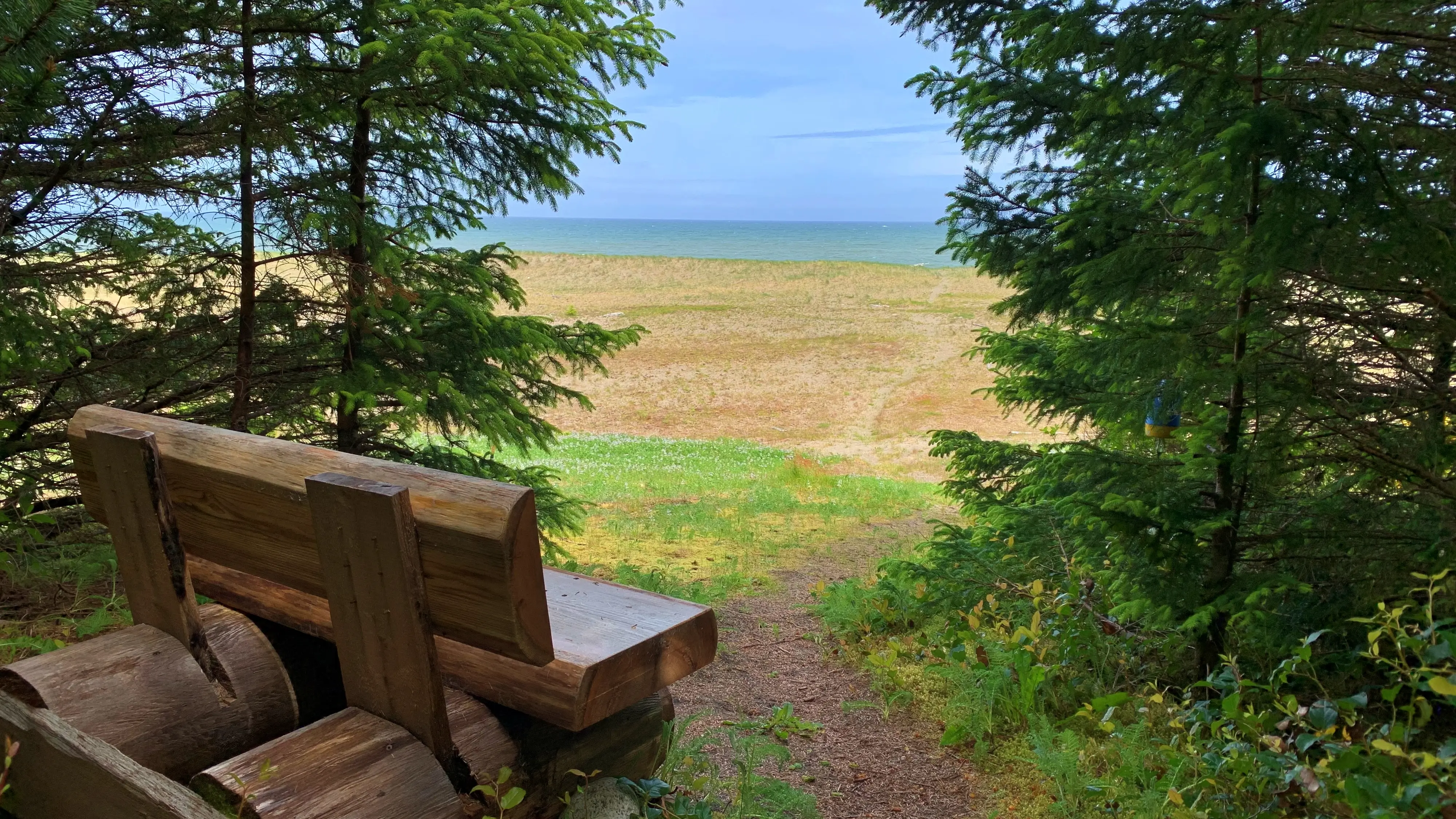Located west of Daajing Giids, and approximately 3 kilometres along the Honna Forest Service road, is the Kagan Bay Beach Trail. The Kagan Bay Beach recreational site offers six user-maintained campsites, all of which face the beach.
Go Hike
The Haydn Turner Beach Trail is located at the end of Oceanview Drive, towards the western end of Daajing Giids. Once at the terminus of Oceanview Drive, you’ll spy Haydn Turner campground signage at the head of a narrow road.
Described by the Village of Masset as “one of [its] main attractions,” the Delkatla Nature Sanctuary Trail was established in 1969 and is a 290-hectare intertidal wetland area that serves as a “critical migratory stopover for birds during spring and fall migration, an important wintering waterfowl area and home to many summer nesting species.” Since its establishment, some 50 years ago, over 140 species of bird have been observed here. We think the Nature Sanctuary is best appreciated as a two-part experience.
Every spring, millions of shorebirds leave their winter homes and fly north to nesting grounds in the Arctic region. A key migration route lies along the western edge of North America – the Pacific Flyway. Birds making the long journey will typically stop for a brief sojourn on Haida Gwaii at the Delkatla Sanctuary.
The Golden Spruce Trail is located approximately 10 minutes (3.5 km) outside the community of Port Clements and represents a brisk 20-minute roundtrip walk. Up until January 1997, the end of this short well-manicured trail led to a viewpoint whereby you could see and admire Kiidk’yaas, the Golden
Spruce.
The Watun River Road, which has also been identified as a trail elsewhere, is accessible just off the Watun River Bridge, approximately 20 minutes south of Masset. The road is roughly 400 meters in length but is often muddy.
Locating the Scout Lake Trailhead marker is an adventure in itself. To find this trail, you first have to hike the full Charlie Hartie Trail, which clocks in at approximately 800 meters one way and has an elevation gain of 160 meters. After about an hour of hiking, you’ll come upon the official terminus point of the Charlie Hartie Trail, as indicated by a fork and some signage. One arrow points left towards “Charlie Hardie,” but blowdown and lack of maintenance have made this route towards the creek virtually unnavigable. The right-pointing arrow, on the other hand, indicates the route to Scout Lake and, in effect, represents the trailhead.
The Monique Creek Trail, like the Three Mile Creek Trail, is found deep within the Tlall Conservancy. Accessing it in the current day requires a bit of effort because the original point of entry – Survey Forest Service Road – was formally decommissioned in 2016 after years of disuse.
The Kumdis River Trail is a short out-and-back route located approximately 2 kilometers outside the village of Port Clements. Like most trails on Haida Gwaii, the Kumdis River Trail lacks a formal trailhead; however, it is easy enough to find.
The Andrews Place Road Trail is a short out-and-back route located at the end of, well, Andrews Place Road in Tlell. The trailhead is not formally marked; however, it can be seen adjacent to a hydro pole at the end of the cul-de-sac, next to Sandy House. At just 250 meters in length, it only takes 5 minutes to complete this trail and emerge, first, onto the flat sand dunes and then the pebbly beach below.

